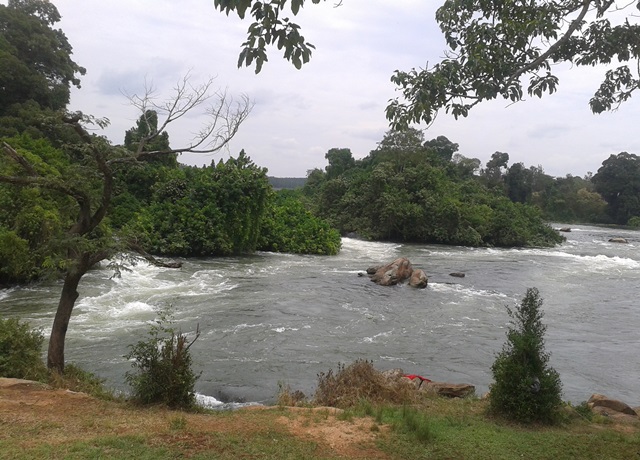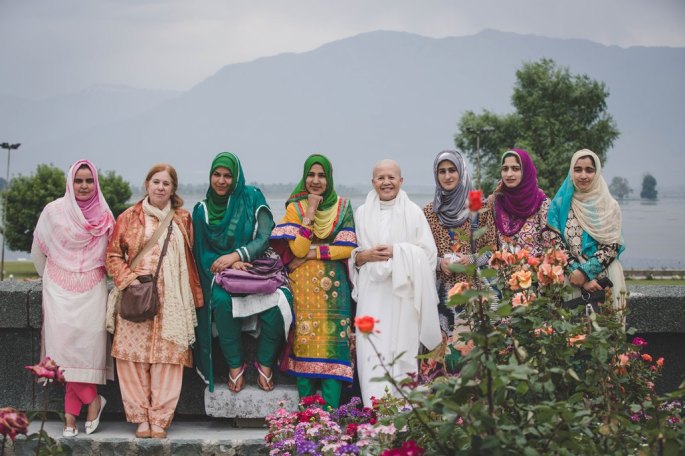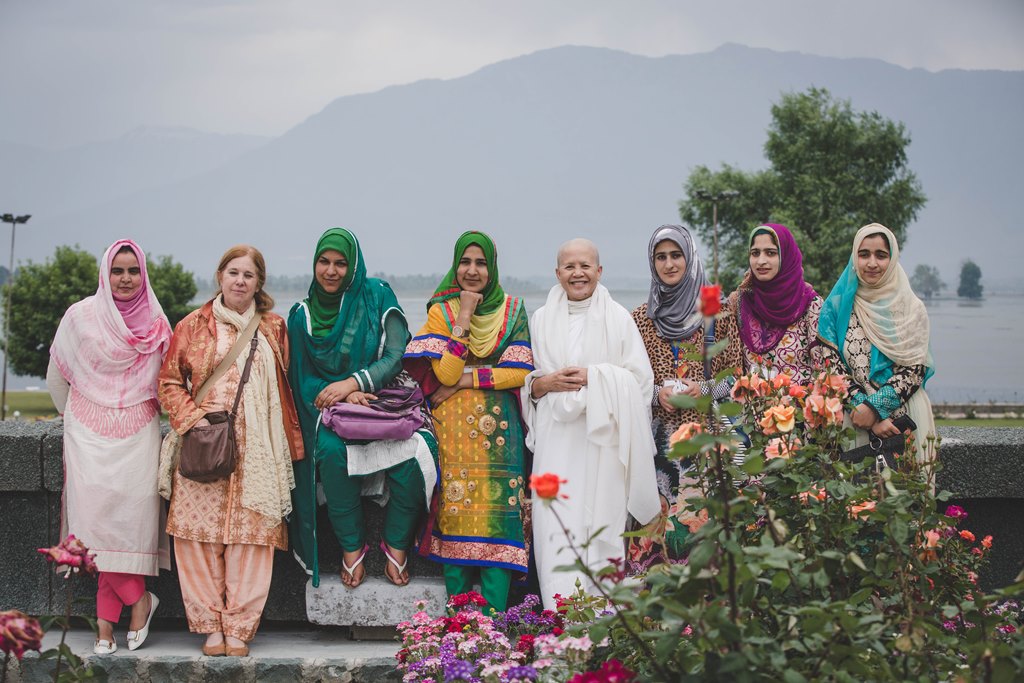by Chief Tamale Bwoya, Kingdom of Buganda

This year I decided to retreat along the bank of the River Nile, to connect and communicate with the conventional energies that travel and circle the planet.
River Nile originates from Lake Victoria in East Africa and travels to the Mediterranean Sea before it joins the Atlantic ocean. From there it circles the planet and returns to Africa by conventional means. All along this journey it carries much wisdom and holds the secrets of the planet.
I was prompted to retreat along the Nile by the visit I had to the River Rhine in Europe, where I was invited to attend as a special delegate to the UN Climate Change Summit COP 23 in Bonn, Germany. I was there as a spiritual mentor and facilitator of a program organized by GPIW called the Inner Dimensions of Climate Change, a retreat and dialogue for young ecologists from Europe.
At the United Nations portion of the program, I heard nature complaining that her voice was not effectively represented, and her wishes and desires were not included in the resolutions. I believe that the UN secretariat should endeavor to invite more wisdom keepers from different parts of the world and prepare a special forum for them to share-out what nature tells them should be done to solve the climate crisis, and the future of life. However, I was gratified by the effort made by the industrial nations to reduce carbon emissions and to examine several other environmental dangers.
On the part of Europe, nature revealed that the European spirituality has the most comprehensive data base for nearly everything on earth. It’s on record that the social events, political decisions, and the scientific discoveries that took place on the European continent, greatly changed and transformed the planet in the past and in present times. As revealed by nature, Europe’s responsibility is the spirituality governing space, and Africa’s responsibility is the spirituality governing the land. Space symbolizes Europe’s energetic nature in a light, intelligent, fast and radiant spiritual system, which are qualities that give it a transformative value. Therefore, because of its transformative potential, Europe will be a key player in the new eco- evolution and transformation, hence Europe should work hard to reconcile and rehabilitate its ecological mistakes and to groom able and competent spiritual leaders to face new ecological challenges.
Lack of able and competent spiritual leadership is the greatest problem humanity faces. The divisions and competition reigning within the spiritual world and their desire to dominate and control man, has disabled man to unite and to solve the ecological demands required of him. Many communities today that passed through colonization had faced spiritual manipulations or social indoctrination of their cultures and values and now find it extremely difficult to identify their sacred spiritual chiefs. In this regard, some “unidentified” chiefs are completely lost/hidden to the society, while others that are recognized are classified with witchcraft or evilness and need to be protected from discrimination.
The way to overcome this problem is for the different traditional leadership at community or regional levels to collaborate so that the cosmic energies of oneness and conscious awakening can work together to reactivate the healing energies in nature, in order to awaken the sacred leadership that disappeared in the past to rise again in those communities. The community leadership we see in many indigenous communities today are either elected or appointed or inherited leadership, but the world needs sacred value holders – the men and women with the ability to tap into the secrets of nature and hence protect and guide their communities and the world. But because of the fear held by the civil and religious leaders of losing their social influence and leadership status, they are using their positions now to suppress and demonize the very leadership the world needs due to the ecological demands of the time. New measures should be taken to formalize matters of nature instead of leaving the big questions about natural systems and manifestations to be answered by civil or religious personnel who may not be the legitimate representatives and wisdom holders of these natural systems.
The manifestation of the new ecological evolution appears to rise through the young people, but it’s our collective responsibility, young and old, to reconcile the past with the present eco-systems as fast as possible, so as to reduce the magnitude of calamities that befall man through natural disasters for his lack of ecological action and disobedience to supreme nature.
New revelations given to Chief Tamale Bwoya
In my retreat meditation, I received the following messages from Supreme Nature:
“People should follow the messages I share regarding the environmental problems on the planet. If science is the cause of the ecological destruction, I will reverse it.”
“I have given several messages of warning and guidance to mankind, but people have chosen to challenge these.”
“I will weaken the greater nations and raise weaker ones so as to neutralize supremacy.”
More secrets about the upcoming ecological evolution were revealed as below:
An introduction of new values into life on Earth, as old ones are being gradually withdrawn. The new measures will limit human authority and pressure mankind to accede to the requirements of nature. For example, man will not have the power to manipulate the new ecological concepts for economic, social or political gain. There will be a new spiritual energy present that will shift our ambitions and enhance human consciousness toward a more positive and higher purpose of life. (These new conceptual values seemed to give Mother Earth some relief, because in my visions, I saw her tears dry out. This transformative action according to Nature is already gradually taking place).
Life did not originate here on Earth it was transferred from elsewhere in the cosmos due to ecological circumstances. It is revealed that since the time life emerged on Earth, it has undergone three fundamental ecological evolutions: T
1.This first evolution did not take place on Earth, but took place in the spiritual realms.
2. The second evolution saw the introduction of physical life on Earth. While life on Earth has undergone different states of social and ecological developments, the conceptual values of Nature have remained the same.
3. The third evolution is the one we are currently in. The first and second evolutions will be evaluated for trial. Both spiritual and physical life will be cross examined. Harmful actions will be condemned and any values that led to the manipulation of life will be withdrawn and higher values introduced into life.
According to observations of the ecological developments and the spiritual evaluation of climate actions taken on earth per continent, Nature indicates that Asia will rise up as a world power and will take up the ecological obligations to lead the planet through this third evolution. However, Europe will be a major ally because of its great contributions in the second evolution. Africa and South America will make strong economic and social partnerships. Finally, Nature calls on the chiefs to become more practical. To come out of their hiding places and explore the magnificence and completeness in which the world was created. The cosmos has multi-dimensional applications that are untapped and are needed to help heal the planet. It is only the sacred spiritual chiefs that have access to these mysteries from Nature.
Mother Earth is calling on you, as her tears are drying up in the hope of the new ecological transformation. The introduction of new values will require the help of the sacred chiefs to oversee and guide the world into conscious science, politics, social and economic policies that humanity and nature need for ecological sustainability.
As the big nations endeavor to reduce carbon emissions and other industrial dangers on their own continents, the same programs should extend to other vulnerable continents. We now see pharmaceutical and big industries closing down in the industrialized continents only to be transferred to the continents supportive of ecological work. We are making the same mistake because the equation remains exactly the same everywhere on the planet. No matter where the environmental danger is placed, whether in Africa, Asia or in Europe. We should help other continents cultivate their own development that is aligned with their ecological values instead of suffocating new wisdom and civilization that is rising up on these continents that is supportive and sustainable for all of life. Nature said, “This world was put into the hands of the chiefs” – this was the revelation given to me by Nature in Laikipia, Kenya in 2012. Please endeavor to open the social barriers because the duty to govern the world was mandated to you, Spiritual Chiefs, by the Divine Authority. Life was not created in the institutional spaces defined by places of worship but in the wilderness, in nature, in the forests and the mountains themselves. Therefore, come out of the institutions to receive the creative wisdom and instructions that you will need to move into the new evolution on Earth.
Peace be to you all.
Chief Tamale Bwoya
Buganda Kingdom, East Africa







Recent Comments